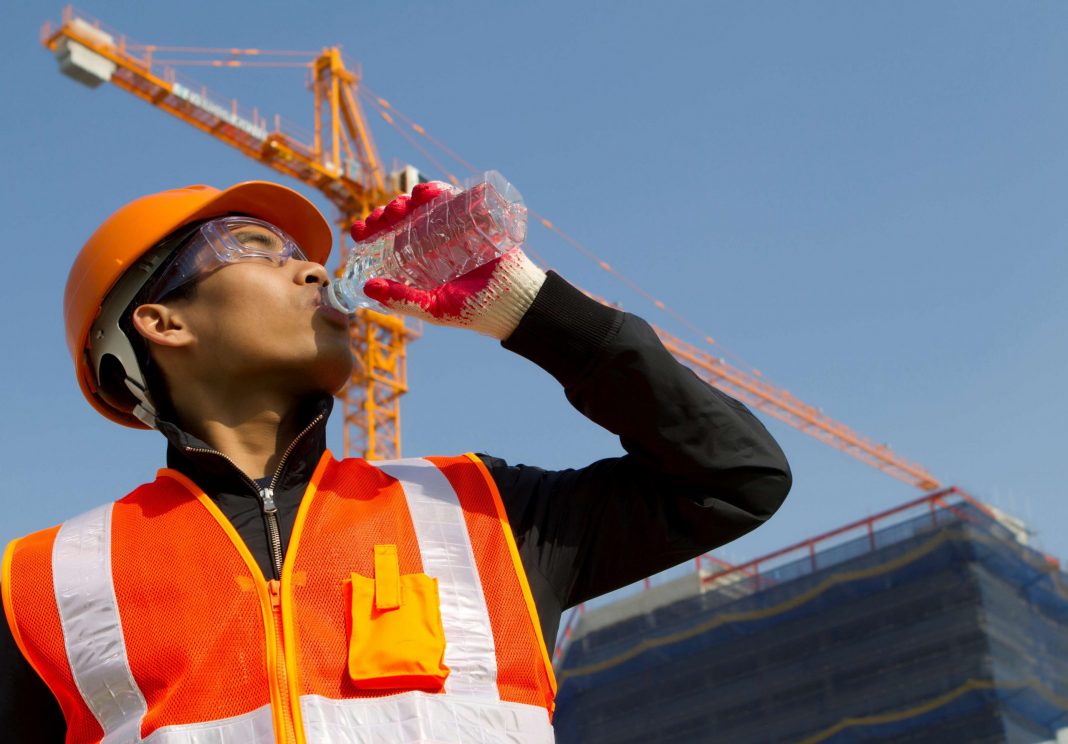Summertime brings the busiest season for most construction companies.
While this business boom can be great for company growth, it also presents health and safety challenges, as soaring temperatures make physical labor exhausting for construction teams.
Preparing for a busy summer season? Site managers need to take all the necessary precautions to keep workers safe from high temperatures. Here’s how to improve heat safety on summertime construction sites.
Monitor the Weather
Meteorology can be a fickle science. A forecast for rain can end up with a hot and sunny afternoon, and a forecast for a clear day may leave you with a thunderstorm.
Despite this dichotomy, a weather forecast can give you an idea of what you’ll need to prepare for the following day. Take the time to monitor things and make decisions for scheduling based on what you’re expecting.
Suppose your base of operations is in a part of the world where the weather can change dramatically from day to day. In that case, it may be worth the money to invest in some advanced weather monitoring equipment or even a machine learning program that can keep track of local conditions and make projections based on past events.
Provide Water and Remind Workers to Drink
Staying hydrated is one of the most important ways to prevent heat-related illnesses. Experts recommend drinking four 8-ounce cups of water an hour if you’re working outside and sweating heavily.
The most important thing supervisors and managers can do is provide plenty of water for your team to drink and encourage them to stay hydrated during their shift.
Wear Sunscreen Daily
Heat isn’t the only risk when it comes to working during the summer. Exposing unprotected skin to sunlight can cause burns in as little as 10 minutes, and the longer you’re exposed to the sun, the worse the health risks can become.
In addition, a single sunburn is enough to increase your risk of developing skin cancer. Encourage your team to wear sunscreen daily, regardless of what they might think about it. After all, every human being can benefit from wearing sunscreen, regardless of the amount of melanin in their skin.
Encourage Proper Clothing
The warmer it is outside, the higher the temptation to shed outer layers and start working in sleeveless shirts and shorts. Instead, encourage the use of proper clothing and safety equipment. Focus on light-colored items and lightweight fabrics to protect your team while still keeping them cool.
At the same time, invest in PPE designed for warmer climates. Opt for hard hats, safety goggles and other equipment that is well ventilated and encourages cool airflow.
Use Wearable Tech
There are several different ways you can approach this tip. Wearable sensors that detect a user’s body temperature and the ambient temp can help you track the weather on your job site so you can make informed decisions throughout the day.
Other forms of wearable tech might include fans you can wear around your neck or clip to the visor of your hat to keep the air moving and help prevent heat stress.
Avoid the Hottest Times of the Day
We think of work hours as 8 a.m. to 4 p.m. or 9 a.m. to 5 p.m., but when you’re working during the hottest months of the year, improving heat safety might mean being a bit more flexible with your scheduling.
In most places, the hottest temperatures occur between 11 a.m. and 2 p.m. Try to schedule your projects so you can avoid these hours. This may mean investing in lighting so you can work into the evenings or starting your day earlier.
Heat island effects can negatively impact certain areas, particularly in low-income communities in African countries, with temperatures in some urban settlements reaching 5-10 degrees Fahrenheit hotter than temperatures measured in nearby regions. If you’re working in these conditions, extra caution is necessary to protect teams from health risks.
Recognizes the Signs of Heat Illness
Even if you take all the precautions, drink enough water and stay out of the sun whenever possible, it’s still possible to experience the symptoms of heat-related illness. It’s essential to understand and recognize the signs and symptoms of these conditions so you can get the affected person out of the heat.
Individuals with heat exhaustion will likely sweat heavily and may have a fast pulse and clammy skin. In extreme cases, they may experience nausea, headaches and even fainting. On the other hand, people with heat stroke will often stop sweating, have an extremely high body temperature and may lose consciousness. In this case, you’ll want to call 911 immediately.
Heat Safety Tips for Construction Sites
Summer is the perfect time to get many projects done, but it can also be difficult to work outdoors. Before the thermometer starts climbing to those record highs, take the time to create a heat safety program to keep everyone safe on your work sites this summer.
About Author:
Evelyn Long is the editor-in-chief of Renovated, a real estate and construction resource for industry professionals.

